I’m very pleased to be giving a paper on anniversary invocations of Marylin Monroe at the BAFTSS 2023 Conference in Lincoln this month as part of a panel on Stars, costume and Make-up, chaired by Llewella Chapman.
Abstract:
Ellen Wright – Marilyn Monroe™: The problematic promotional politics of sex aids, biopics and borrowed dresses.
This paper will examine the complex ethical politics of utilising a deceased star’s ‘brand’, considering the specific example of the product marketing for the Womanizer Marilyn Monroe™ clitoral stimulator.
Monroe’s persona, with its explicit focus on feminine performativity, is a multifaceted one. Whilst frequently discussed as a figure of female empowerment, her acute vulnerability is also a key element within this star’s public persona, with recent reappraisals centring upon Monroe as a victim of sexual and symbolic violence, labouring within a harmful patriarchal industry and larger cultural context.
Furthermore, this year Monroe’s image has twice re-entered the public sphere, firstly, with the loaning of her nude illusion gown, famously worn to sing happy birthday to John F Kennedy, to the celebrity socialite Kim Kardashian and secondly, due to release of the speculative and deeply controversial Netflix quasi-biopic Blonde (2022). These instances have prompted vociferous debate around what constitutes appropriate and/or respectful use of her image.
This paper will examine the rhetorical means through which Monroe has been strategically deployed in the marketing of this unique product. Whilst her famously unabashed embrace of her natural sexuality and sex appeal (“What do I wear in bed? Chanel No.5.”) is clearly being co-opted into contemporary, popular and extremely profitable understandings of body and sex positivity, her star image has been appropriated by and attached to a vast array of products and services over the years, so just how problematic, if at all, is this product and its marketing?
The panel will be no. 2.3 on the afternoon of day one of the conference (Monday the 3rd of April) from 2.30 to 4pm in room ATB0107. The full panel line up consists of:
2.3 Stars, costume, make-up
CHAIR: Llewella Chapman
Abigail Whittall ‘Examining Guillermo Del Toro’s Monsters: Labour, Visibility and the Practical Effects Makeup Actor’;
Ellen Wright ‘Marilyn Monroe™: The problematic promotional politics of sex aids, biopics and borrowed dresses’;
Richard Farmer ‘‘Bridal outfits from the heart of filmland’: Clothes rationing, wartime film production and Gainsborough Pictures’ Studio Hire Service’
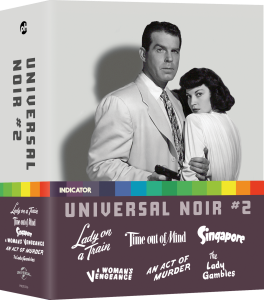


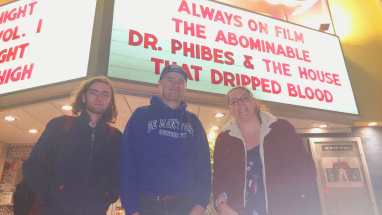
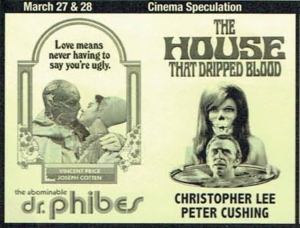
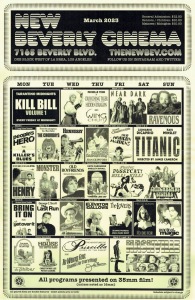


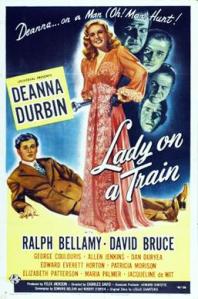 Early in 2023 I was approached to write the accompanying booklet essay for a new DVD/Blu-ray box set of Film Noirs produced by Universal studios for the Powerhouse Films Indicator series (
Early in 2023 I was approached to write the accompanying booklet essay for a new DVD/Blu-ray box set of Film Noirs produced by Universal studios for the Powerhouse Films Indicator series ( 

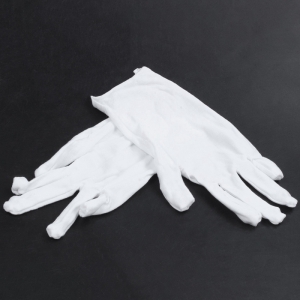 Tracked by a blinding spotlight, Marilyn Monroe trotted across the otherwise dark, cavernous stage to wolf whistles and cheers; a huge bubble of white-blonde hair and wrapped in a white ermine stole, she wiggled her way to the podium to reveal a glittering, full length, Jean Louis nude illusion gown that hugged her famous curves so tightly, she apparently had to be sewn into it.
Tracked by a blinding spotlight, Marilyn Monroe trotted across the otherwise dark, cavernous stage to wolf whistles and cheers; a huge bubble of white-blonde hair and wrapped in a white ermine stole, she wiggled her way to the podium to reveal a glittering, full length, Jean Louis nude illusion gown that hugged her famous curves so tightly, she apparently had to be sewn into it. I was asked this morning to appear on BBC Radio Scotland’s Lunchtime Live show to respond to yesterday’s Mail on Sunday article while cited anonymous Conservative MP’s alleging that Angela Rayner MP deliberately attempts to distract Boris Johnson in the House of Commons through exposing and crossing her legs in an article headlined ‘Stone the Crows! Tories accuse Rayner of Basic Instinct ploy to distract Boris’ .
I was asked this morning to appear on BBC Radio Scotland’s Lunchtime Live show to respond to yesterday’s Mail on Sunday article while cited anonymous Conservative MP’s alleging that Angela Rayner MP deliberately attempts to distract Boris Johnson in the House of Commons through exposing and crossing her legs in an article headlined ‘Stone the Crows! Tories accuse Rayner of Basic Instinct ploy to distract Boris’ .